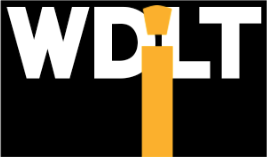Who gets the larger slice of the pie?
We have been speaking about "engagement" for some time at the school I lead. I have, many times, urged all teachers to consider this critical aspect of teaching and learning and have observed many excellent examples of students fully engaged in their learning. At the same time, I have observed classes where students have not been engaged in the learning the teacher is attempting to lead the students through.
One question I am often asked is, “how can you tell?”.
The answer is never a straightforward one. What may be very engaging for one student may not be so for another. While this may be the case, there are times when it is very clear that students are not engaged. One very simple question I always ask myself when I am visiting a classroom is, “who is DOING?” Is the teacher doing or are the students doing? What is the ratio of teacher-doing to student-doing? If I was to represent the different “doings” in a pie chart, what would it look like? Who would have the biggest slice of the pie?
And upon examining “who” is doing, WHAT are they doing? If we all agree that learning by doing is one of the best ways of learning, then these are very important questions to ask!
It is also extremely important to know that "listening" is not doing! Listening is what comes before doing. Listening happens during doing. Listening, by itself, is not doing!
Talking IS doing!
When we talk about something, we immediately engage our thinking. We choose what to say, how to say it, when to say it, who to say it and so on. It has been said many times before - we learn when we speak. I have also repeated many times, "we cannot write about something if we cannot speak about it" - in that order! Speak first. Write second!
Considering a pie chart of who is talking is extremely informative! If the largest slice of the who-is-talking pie is the teacher, then it is fair to assume the teacher is doing most of the learning! Obviously, we want students to learn more than the teacher, so it should follow that the students are talking about the skills, concepts and understandings MORE THAN the teacher!
A most critical element to take note of is that the "doing" and the "talking" must be about the learning - focused on the desired outcomes of the lesson, directly linked to the objectives or standards, considering or manipulating the skills, concepts and understandings of that lesson. The pie charts we produce should ONLY be built around the doing and the talking related to the learning!
So, consider your own teaching. Choose a lesson you taught today, or last week. If you created two pie charts to represent "who is doing?" and "who is talking?", what would they look like? Would the slices be one big and one small? Would they be fairly equal - half a pie each? Who is doing most of the talking?
The students, not only because they are hungry teenagers, but also because they are the learners, should have the larger slice of the pie. Are you serving it to them?

